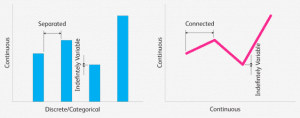A blog content provider has to be able to argue well. He or she must know how to make a deductive argument.
Inductive arguments, however, are just as important, and, in fact, are employed with greater frequency than their deductive relatives.
Download this post by entering your email below
What is an Inductive Argument?
An inductive argument is very different than a deductive argument. Like a deductive argument, an inductive argument has premises and a conclusion.
They differ because deductive arguments rely upon the rules of logic (and can be either valid or invalid, depending upon whether they follow these rules or fail to do so), while inductive arguments do not.
Just because an inductive argument fails to be valid does not mean that it is irrational. In fact, some philosophers, most notably P. F. Strawson, have argued that induction is a necessary part of being rational.
Inductive arguments are used when one wishes to present an argument but do not, or in some cases cannot, evince a necessary connection between the premises and the conclusion.
This happens very often in scientific fields in which correlations between phenomena are observed, but causation cannot be definitively established.
Induction is also the mechanism used when one makes a basic prediction (provided, of course, it’s not just a blind guess). Here is a basic example:
- The sun has risen every successive day in my experience.
- There is no reason to suppose that this will cease to be the case.
- The sun will rise tomorrow.
There is no guarantee that this will be the case. The sun could fail to rise tomorrow due to some cataclysmic event. The fact that the premises can be true, and the conclusion false, makes it an invalid deductive argument no matter how persuasive it may be. And yet it is very persuasive.
Strong Inductive Arguments vs. Weak Inductive Arguments
The above example is what is known as a strong inductive argument. It means that there is virtually no possibility of having true premises and a false conclusion, though the possibility does exist.
One makes a weak inductive argument, on the other hand, when an individual attempts to make the case that phenomena are linked in some way without ample sampling or diligent observation. Here is an example:
- “Get Back” is a rock song.
- The time signature of “Get Back” is 4/4.
- All rock songs have a time signature of 4/4.
This argument is inductively weak even if the two premises are true. This is because rock songs can have a variety of time signatures, as there is no necessary time signature that a song must have for it to be considered a rock song.
The reasoning jumps from one to all. The first example, on the other hand, jumps from every instance in the past to every instance period.
This strikes the heart of what determines the strength of an inductive argument. A strong inductive argument will present multiple, convincing examples in order to establish that it is not presenting a fluke or a series of flukes. A weak inductive argument will not do this.
For writers, this is something to remember.
We are usually making inductive arguments when we write. It is imperative that we remember to always try to make the strongest inductive arguments possible in order to present our readers with convincing material.
How to Write Better Inductive Arguments and Create Convincing Content
Have you ever been in front of a room of people trying to win a debate? How did it go?
If you found that people weren’t easy to convert to your side, the chances are that you didn’t use the right resources to back your claims and make your point indisputable.
To win over your audience, you need to get better at using inductive arguments and finding the right resources to support your assertions. By acknowledging the other side’s claims and pointing out why data supports your claims, you may find your audience more likely to convert.
How can you improve your inductive argument skills?
Start by remembering that your inductive argument needs to present multiple examples. The more evidence you present, the stronger your argument becomes.
You should also present your evidence with reputable sources to back it up. For example, if you claim that eight out of 10 people enjoy ice cream, you could use credible, reliable resources such as statistics from the International Dairy Foods Association to strengthen your claim.
Another thing to do is to explore both sides of a discussion. People who believe differently than you may stop listening when you argue only on your own side. Instead, focus on stating the opposing position and factual data about it. Represent that position accurately, and you’ll be a step closer to getting the reader to hear you out.
Remember, at the core, all inductive arguments have to be based on facts and data. Represent both sides of a disagreement fairly, but back up your arguments with citations from credible sources to persuade your audience to feel more like you do about your argument.
Examples of Effective Usage of Inductive Arguments in Blog Articles
Now that you better understand how inductive arguments are built, it’s time to see them in action.
A Poor Inductive Argument
A poor inductive argument lacks backing. Here’s an example of what one may look like.
Tim stands in front of the debate class. He says, “I am the top student in the school.” He provides no further information or details. His statement can’t be proven on its own, and it’s not a good argument. This is a poor inductive argument.
To make it a better argument, Tim needs to have paperwork showing that his scores are above all the other students in the school. Once he has that data, he can say, “According to third-semester report cards, my grade point average is 4.1. That makes me the top student at the school.”
With this extra resource, it’s hard to argue with what Tim has to say.
A Good Inductive Argument
A good inductive argument provides some details but is likely not enough to convince the audience. Here’s an example.
Jenny researched car accidents in the United States. Based on the data released in 2022, she found that around 42,915 people died in crashes in 2021. She also found that speeding was responsible for approximately 30 crashes each day, leading her to believe that 10,950 deaths could be related to speeding.
While Jenny does have a great resource through the U.S. Department of Transportation, there is still a problem with her argument. She starts off strongly by pointing out two facts—a high number of fatalities happen annually, and speeding is a cause of many crashes. Unfortunately, she doesn’t have any data to support her claim that 10,950 deaths could be directly linked to speeding. In reality, 11,057 people died due to speeding in 2021, so Jenny’s claim is inaccurate, even though her argument includes reputable sources with relevant data points.
A Great Inductive Argument
A great inductive argument introduces both sides of a debate and takes apart the opposition piece by piece. Here’s an example of an inductive argument that does everything it’s supposed to do.
Kim reads a research paper arguing plants don’t need light to survive if they receive the right nutrients in their soil. Kim starts researching plants and discovers all plants need light for photosynthesis. Kim continues to research nutrients in the soil and finds plants have to have light, oxygen, and water to create energy in the form of carbohydrates. Kim determines that plants cannot survive without light, even with nutritional support, since light is needed to convert those nutrients to energy. She backs up her argument with data from scientific sources, such as BBC Science Focus and the University of Minnesota Twin Cities.
In this case, Kim was sure to address the claim that plants need light. She established that nutrients in the soil aren’t sufficient without light to convert them into energy. Finally, she backs up her argument with reliable resources known for their expertise.
Copywriters Are Skilled at Creating Inductive Arguments
Copywriters often have to gather data from multiple sources and develop reasonable inductive arguments. Writers skilled in communication understand both sides of a discussion and know how to find authentic, authoritative sources to support their findings.
Writers who work with clients need these skills to help them promote their products with confident blurbs, argue against competitors’ claims, create comparative listicles, and put together illuminating case studies or white papers for various industries.
Do You Need Help With Inductive Arguments? WriterAccess Copywriters Help You Win Arguments
The copywriters at WriterAccess are experts in the field, prepared to help you win every battle. Are you ready to scale your content production and reach growing audiences? Get a 14-day WriterAccess trial, and see how human-driven content makes a difference to your ROI.
2024 State of Marketing Report
Your golden ticket to crush your goals with data-driven insights!
2024 State of Marketing Report
Your golden ticket to crush your goals with data-driven insights!

![[Rock NA] State of Marketing Reports 2024 – Comkt Hubspot State of Marketing Report 2024](https://rockcontent.com/wp-content/uploads/2022/07/Banner-Fino-Rock-Convert-2500-%C3%97-500-px-19.png)






